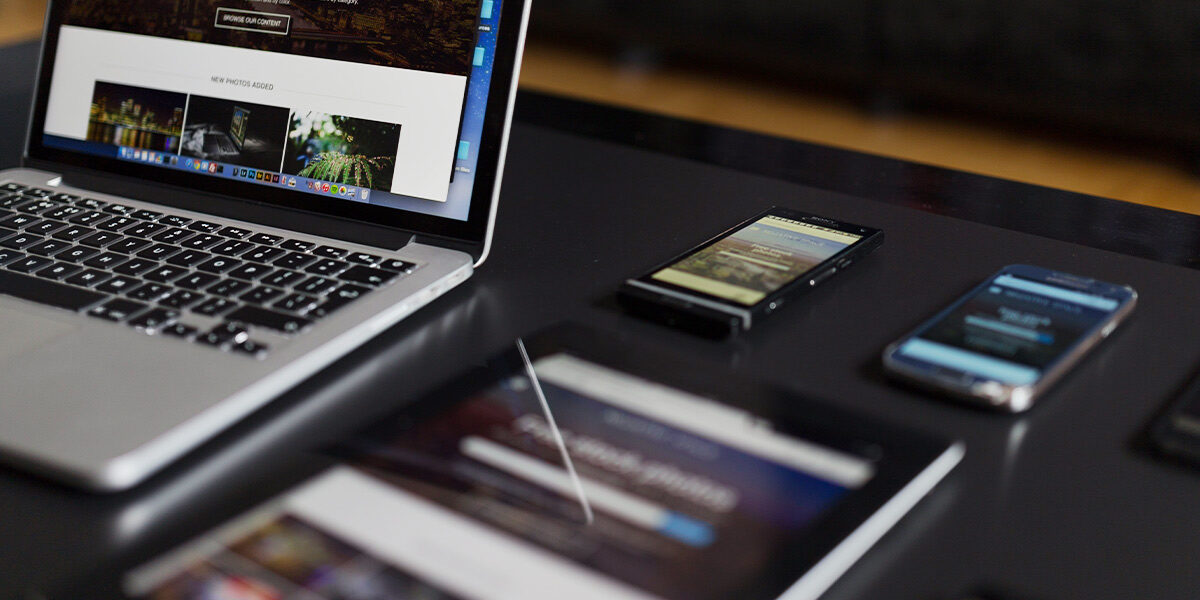The need for responsive web design services stems from the need to create a single website that supports many different devices and to ensure the maximum usability of the same. For your business, this means that you gain access to a multitude of web visitors. This increases your chances of generating leads and facilitating their conversions.
Defining responsive design
This approach to web design helps in the creation of dynamic changes to your website’s appearance depending on the device’s orientation and screen size. With people accessing the internet from a multitude of devices today, your online business needs to develop a website that can be accessed from all these devices.
Designing websites individually for different devices is not a very viable solution. However, the use of the responsive web design or RWD has helped solve this problem by designing a single dynamic website with the capability to optimise itself to the device from which it is being used.
By making use of “breakpoints,” the RWD determines how your website will appear on a particular device.
Some features of RWD are:
- The same HTML is used on all devices. By making use of CSS, the appearance of your website is changed so that different-sized viewports used by different users can be serviced using a single codebase.
- RWD is dynamic since the elements of a webpage keep shuffling with every increase or decrease of the viewport. The contents and your website design elements are rearranged based on the respective proportion-based grid of the device.
- RWD is also used to hide secondary content on small screens. When you decide to avail of responsive web design services, they make these decisions about altering the webpage appearance and functionality, hiding content etc. based on the types of users accessing your website and their needs.
- A website made using RWD is easier to maintain overtime, can be developed at a faster pace and makes updations easier.
Important elements of a responsive web design
However, to enhance the utility of a website made using RWD for your online business, three important elements need to be incorporated. These elements help to preserve the clarity and functionality of your website thereby facilitating an enhanced user experience.
- Creating usable experiences: To ensure a superlative user experience across devices, both the design and developmental aspects of the RWD need to work together. This is primarily due to its:
- Dependence on element shuffling around the webpage
- Need to fit in all elements on the same page
- Making the design usable for all screen sizes and resolutions
When the design and development teams work closely in sync with each other their prediction of a webpage’s look at the end of the element shuffle is much better. They can also predict how users will feel when they negotiate the website.
- Focus on content: Content prioritisation is an important advantage of implementing RWD correctly and properly. By enabling more content to be visible on smaller screens, users are not required to scroll up and down endlessly to find what they are looking for. This RWD enabled smart content prioritisation will help your users to find things easily thereby increasing the ease of navigability of the website.
- Performance of the website: The goal of RWD is to ensure equivalent access to information across devices. The performance of your website depends on its loading time, which is, in turn, dependent on the quality of the internet connection. However, with good internet speed, the performance of a website with responsive design is the same across all devices since the same code is used. Today, with strong internet connectivity available in all nooks and corners of the world, the performance of an RWD website is infinitely better.
To remove even the remotest possibility of performance issues due to bad internet connectivity, most responsive website design services, like Neuronimbus, implement an adaptive design. In this process, the HTML code to be delivered to the device depends on the server hosting the website. Once a device requests a website, the hosting server detects it and delivers the required HTML batches to the same.
By using a responsive web design, web designers can ensure the creation of usable experiences, enable content prioritisation and enhance website performance. Consequently, your website becomes commercially viable and extremely useful for your business. It gives you much better returns in terms of leads, conversions, revenue generation and profitability.


